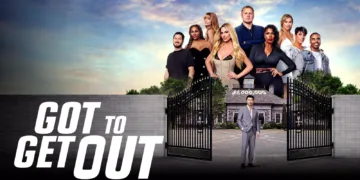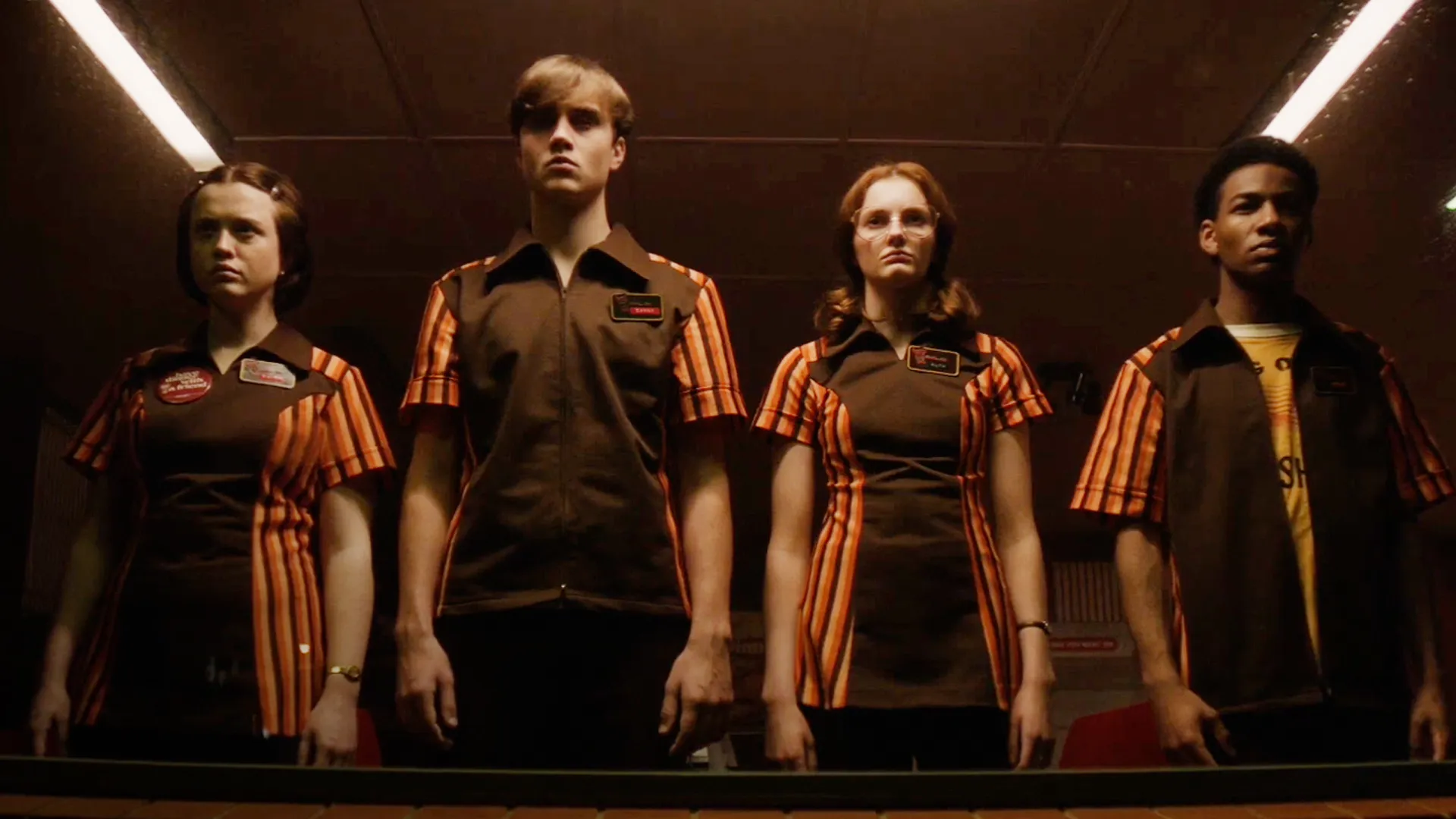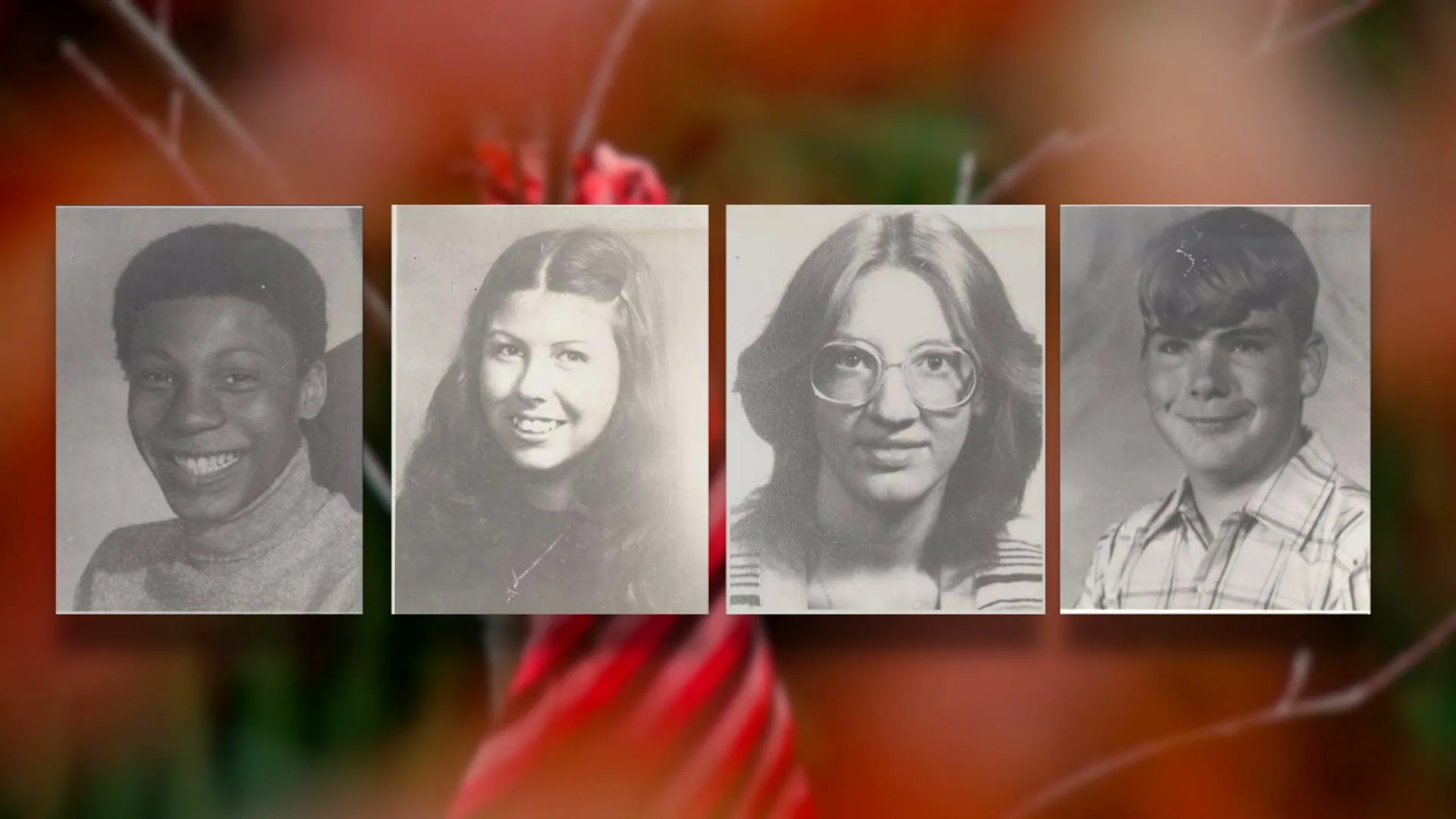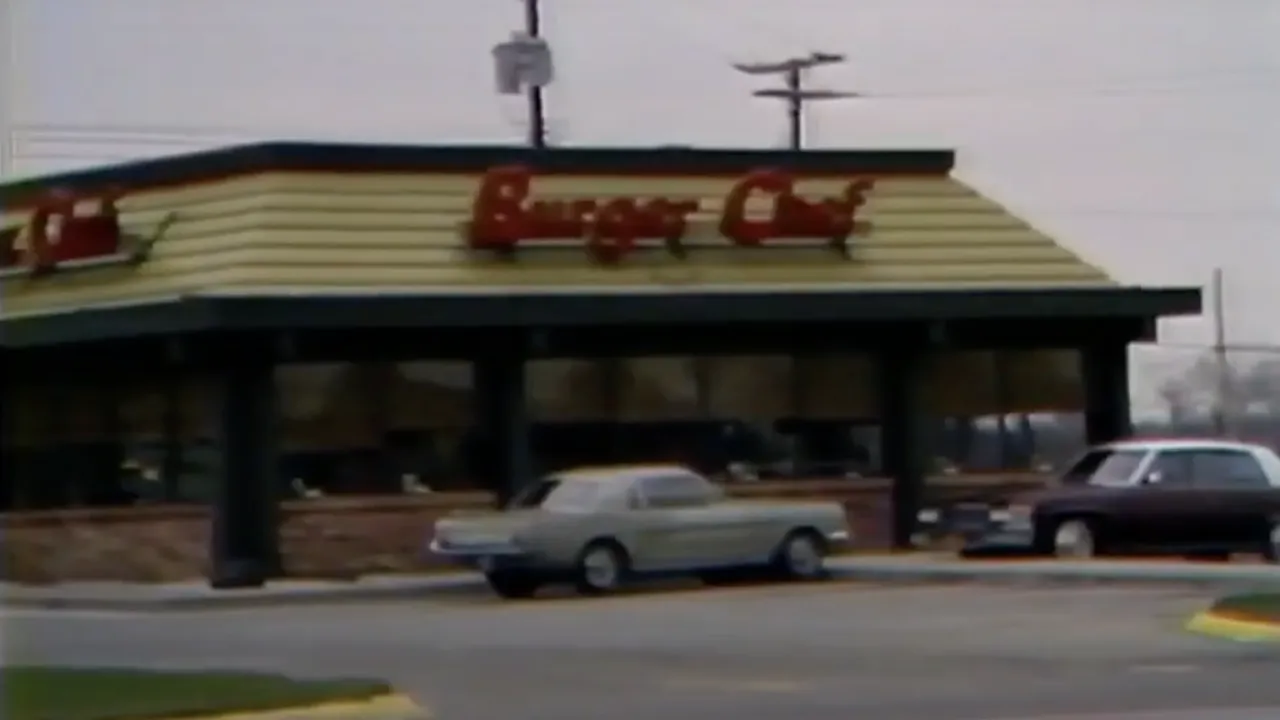Late one November night in 1978, four teenagers disappeared without a trace from the small town burger joint where they worked. Two days later, the tragedy deepened when their bodies were discovered in a nearby forest, each one having met a cruel end.
Over four decades have passed since then, yet this baffling cold case remains unsolved. Now, a new documentary called The Speedway Murders seeks to shed light on this dark mystery through interviews with those close to the case and by exploring the various theories surrounding who could have committed such a heinous crime.
Directors Adam Kamien and Luke Rynderman traveled between Australia and Indiana to piece together the events of that fateful evening. They interviewed retired investigators and witnesses who were there that night, trying to determine what really happened in those early hours when the restaurant was found empty. Several possibilities emerged over the years, and the film examines each one to sort truth from rumor.
Despite their efforts, some crucial questions remained unanswered. And in trying to bring their own creative spin, the directors made choices that distracted more than they illuminated. While their goal was to find justice, the path forward remains as unclear as that night so long ago. Through it all, four young lives were lost—lives that deserved so much more.
Troubled Beginnings
The story began on November 17, 1978, a night like any other in the small town of Speedway, Indiana. For four local teenagers, it was just another evening spent at their part-time jobs closing down the local Burger Chef restaurant. Little did they know it would be their last.
The victims were Jayne Friedt, 20, the assistant manager; Ruth Ellen Shelton, 17, Daniel “Danny” Davis, 16, and Mark Flemmonds, also 16. As the hours passed and the restaurant prepared to shut its doors for the night, no one could have predicted the darkness awaiting them. When closing time came and the four failed to return home, concern quickly grew among loved ones.
It didn’t take long for worries to turn to grim reality. Nearly two days later, on November 19, their bodies were found beaten, stabbed, and shot nearly 20 miles away in a secluded wooded area. Who could commit such a heinous act, and why? In the pequaint town of Speedway, such violence seemed unfathomable.
That same night at the Burger Chef, a shocking series of errors would set the investigation down the wrong path. Upon arriving at the restaurant, police dismissed it as an ordinary burglary after seeing a broken safe and disheveled interior. Never suspecting foul play, they allowed the crime scene to be cleaned before gathering evidence.
By the time their mistake was realized two days later, it was too late. Valuable clues had vanished, tainting the case from the beginning. Though photos were supposedly taken, officers admit they inaccurately recreated scenes after the fact. Interviews went undocumented as well.
In the decades since, police have wrestled with this legacy of mistakes while seeking answers long delayed. But for the families and community of Speedway, healing remains out of reach without justice for four young people who never made it home that fateful night so long ago. Their tragic story is a cautionary tale of lives lost and a reminder that in such work, no error can be afforded.
Gathering Clues
Over four decades, several intriguing theories have emerged about who could be responsible for the Speedway murders. The documentary presents the top suspects in vivid detail to separate fact from speculation.
First is the robber gang theory. In the years before, a group of thieves targeted local Burger Chefs for cash. Two known members, S.W. Wilkins and Gregg Steinke, matched witness descriptions of men near the restaurant that night. Though denying involvement, these career criminals spent time near where the bodies were found. Did their larceny turn lethal?
Another focus is Don Forrester, a convicted criminal who later claimed involvement in a shocking jailhouse confession video. He pinpointed Jayne Friedt as the target, saying her brother’s drug debts motivated the act. But Forrester’s credibility was questionable, changing his story like the wind. Could he know intimate crime scene details from somewhere else?
Speedway itself saw bombs detonate weeks prior, for which Brett Kimberlin went to prison. The documentary interviews him too, though he dismisses the arson allegations as “fake news” while admitting only to pot dealing back then. Still, might vengeance have played a role in the grisly acts that followed?
Allen Pruitt, who shared a cell with Jayne’s brother, provided another angle. He said local drug lords Jeff Reed and Tim Willoughby snatched the employees over disputed business. Yet Willoughby vanished months before, and Pruitt was wasted that night—how much could he really recall?
The most compelling voice may be Tim Boyer, Reed’s old friend. He claimed Reed privately confessed to the crimes, even recounting telling details. But without proof, the case remains cold. For families seeking answers after all this time, the unknown man haunts their lives like a shadow never fading in the night.
Sifting Through Sources
A crucial part of any investigation involves evaluating those involved. In The Speedway Murders, this task proves crucial yet complex, with the passage of time casting doubt on even the most well-intentioned accounts.
Lead detective James Cramer emerges as a steady voice, owning past procedural errors while still pursuing missing clues. Others provide glimpses into that dark night, like the couple who witnessed two strange men or the dining companion of one lost too soon.
Yet the unreliable plague this case too. One man confesses out of the blue but contradicts beyond doubt. Others leverage their fleeting involvement for fleeting fame, glossing over inconsistencies. The filmmakers question none, missing a chance to test faulty recollections against documented fact.
Of all interviewed, Theresa Jeffries stands out, sharing her sister’s all-too-brief life and hopes cut short that night. Her quiet dignity provides the sole emotional tether as puzzles pile without pattern.
As surroundings shift from bustling streets to hushed forests, puzzles deepen sans answers. While motives murk, one truth shines clear: for families seeking peace, justice long denied remains the solitary path to light ahead, however dimly it leads and whoever trod it first into the night.
questionable spirits
While reenactments often lend documentaries verisimilitude, Speedway Murders took an unwise turn with its dramatic visions. Though doubtless well-meaning, the ghostly reconstructions did more harm than good.
Watching the young victims debate theories surrounding their own brutal ends came across not as respectful tribute but as a as a sorely misjudged attempt to insert levity. Their dialogue ranges from bland to bizarre, likely pleasing a few and distracting all from the real human drama that unfolded that night.
Perhaps directors aimed to personalize statistics and breathe life where there was only loss. But resurrecting souls serves no slain. It trivializes tragedy and draws focus to fanciful fiction over factual remembrance. Where honor is due, cartoons disrespect.
Interviews alone stir emotion in ways no casting could. Experts offer clues—kin, raw memory of people lost. Reconstructions add spectacle without veracity. They manufacture melodrama from misery and sensationalize at the expense of sensitivity.
Doubt now clouds all recounted that night. If witnesses prove wavering and police fail at foundation, what trust in script? Tenuous testimonies seem flimsier framed as fables. Fact fades to fringe while fantasy holds the floor.
Credentials cave where credibility is key. Sleuths serve best unraveling realities, not weaving fantasies that fabricate more confusion than clues. The spirits summoned stir skepticism, not solution, distracting the documentary’s duty to deliver difficult, unvarnished truth.
No Easy Answers
After decades of dead ends, some clues stand out more than others in the Speedway case. The two men witnesses reported seem fitting suspects, but their culpability remains conjecture. Pruitt’s story raises questions, his foggy memory that night making his account less than airtight.
As for the rest, each theory has its troubles. Motive around drugs holds appeal, yet proof fell short. The inmate’s confession changes too much to trust. And while the robber gang had means and a chance, their denials keep investigators guessing.
Of all those interviewed for clues, the friend with Reed’s supposed admission comes across most credibly. But without proof, all witnesses leave some wanting. With suspects dead or vanished, some closure may never come.
Current police offer little update beyond pledges to press on. Understandably, their priority lies with prevention over retrospection. Yet for victims’ loved ones still living without answers all these years, the need for justice remains as raw as that horrific night.
While this film presents what’s known, it provides no means to new ends—as intriguing as shadowy leads may seem. Unless fresh clues emerge, the ultimate truths around these four lives cut short may forever evade the full light of day. All that’s left is honoring their memories and hoping one break may yet come for a case that, even now, refuses to fully release its grip on a town still seeking peace.
Finding Closure
When first embarking on this documentary, one can only imagine the hopes director Kamien and Rynderman carried—to solve a case long cold, to find answers for loved ones left with only questions.
While their devoted research uncovered nuances lost to time, key objectives went unfulfilled. Valuable interviews mixed with distracting dramatics diluted the true human story at its core. Crucial answers remained frustratingly out of reach even as unlikely theories took the stage.
Ultimately, Speedway Murders served best not as sleuthing per se but solemn remembrance. Faces and lives cut short emerged with rare clarity, granting lost souls forms where before were only names. Friends and family sharing memories kept real those taken too soon.
In crimes without closure, catharsis comes hard. Though closure proved just out of frame, honoring the fallen remained this film’s victory and a timely reminder that lives matter beyond how they end. For families in search of a soothing sunset, empathy and understanding offer solace where facts and photos fail. In this small way, a difficult duty was well met.
The Review
The Speedway Murders
Speedway Murders pursued a worthy goal in reexamining an unsolved crime; dramatizing details did more harm than good. Opportunities for meaningful commentary were squandered in favor of overwrought theories, skirting the real human toll. As a murky chronicle of missteps, it succeeds; as a tribute to lives lost, it falls short.
PROS
- Thorough examination of multiple theories about the case
- Insightful interviews from investigators and loved ones
- Authentic attention to historical context and details
CONS
- Excessive and unnecessary dramatization distracts from facts
- Fails to independently scrutinize witness accounts
- Provides little new information beyond what's already public.






















































Discussion about this post